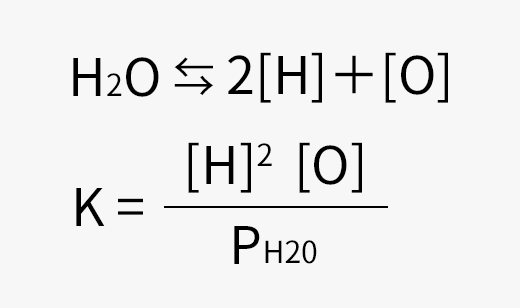Elements required in casting flux
| Effect | Remarks |
|---|---|
| Oxidation prevention | Because copper alloy is molten metal just before solidifying, oxidation at this place must be minimized as much as possible. Therefore, flux that can cleanly cover the surface of the molten metal is required. |
| Removal of non-metallic inclusions | Because oxide (non-metallic inclusions) from added elements will become entrained unless supplemented and removed, a flux with high supplemental and removal capabilities is needed. |
| Lubricating properties | Because many scratches and transverse cracks occur when the mold and ingot have poor lubricating properties, a flux with high lubricating properties is needed. |
| Heat removal properties | Because wobbling, cracks, and internal defects of the ingot occur when heat removal is not uniform during solidification, the flux must have a uniform heat removal effect. |
Representative flux
Mand effect of the flux
| Use and intended use | Flux type | Effect |
|---|---|---|
| [Copper alloy high in copper concentration] *Additive elements Mg,Zr,Ti,Cr,Be,Si,Al,Mn,etc. |
|
For the casting of copper alloy with active elements added, the oxides of those active elements cause surface roughening, entrainment, and breaking. Our company offers flux that raises the supplementation of these oxides to the maximum and has good lubrication properties. |
| [Copper alloy high in copper concentration] *Additive elements Fe,Ni,Sn,P,etc. |
|
When the elements at the left are added, oxide generation as well as cracks and vertical stripes due to Sn enter more easily. We provide flux that alleviates both of these. |
| [Phosphorus deoxidized copper] |
|
With deoxidized copper the quick covering of the molten metal surface is desired. We provide flux that emphasizes spread. |
| [Nickel silver, Cupronickel,etc.] The copper alloy which has high melting point |
|
It is an alloy type that has many pin-hole type defects and cracks, and our company provides flux with good gas release properties, and is well adjusted to allow heat removal as uniformly as possible. |
| [Red Brass] |
|
Because it is a type of alloy that gets pin-holes easily and also degenerates flux easily, our company provides flux that does not easily degenerate or out-gas. |
| [Brass] Yellow brass, High strength brass, Al brass, Leaded brass, etc. |
|
There are various brass alloys, and it has a variety of problem points including flux entrainment, segregation, cracks, pin-holes, and surface roughness. Our company provides a variety of fluxes that solve the problems of each company’s casting machines and situation. |
| [Bronze] |
|
Because it is a type of alloy that gets pin-holes easily and also degenerates flux easily, our company provides flux that does not easily degenerate or out-gas. |
| [Leadless copper compound metal] |
|
It pulls the harmful substance lead (Pb) from the components, and casting defects will vary considerably. Please consult with us first. |
